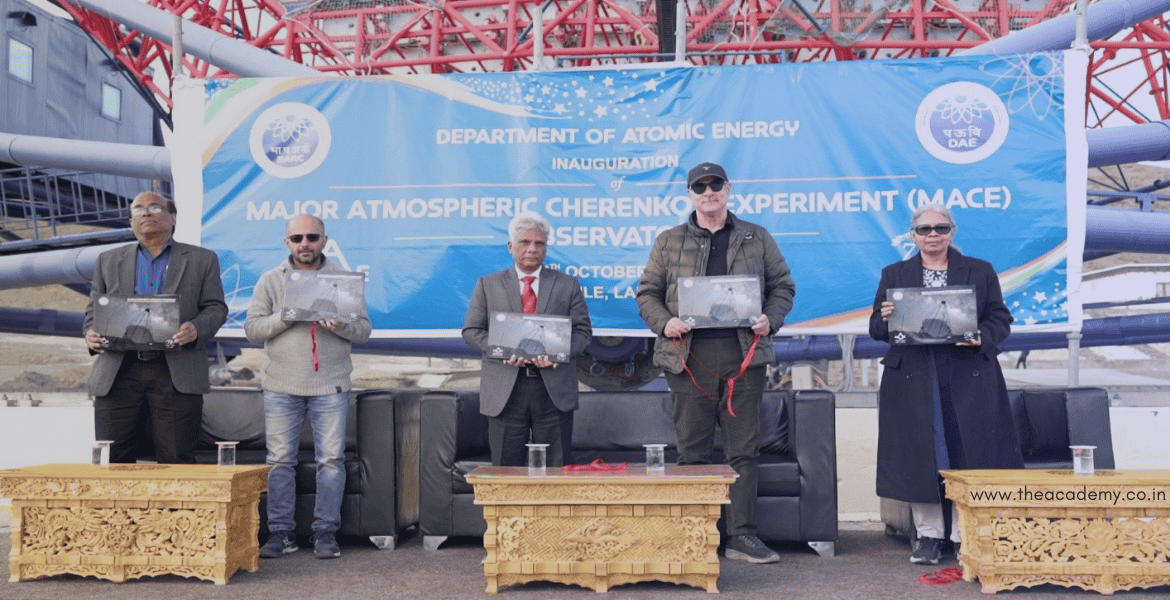. 11/10/2024 4:09 PM
Asia’s Largest Cherenkov Telescope at Hanle, Ladakh
India has made a significant advancement in cosmic ray research with the inauguration of the Major Atmospheric Cherenkov Experiment (MACE) observatory, Asia's largest imaging Cherenkov telescope. Located in Hanle, Ladakh, at an altitude of almost 4,300 meters, MACE is also the highest telescope of its kind in the world. The observatory was inaugurated on October 4, 2024, by Dr. Ajit Kumar Mohanty, Secretary of the Department of Atomic Energy (DAE) and Chairman of the Atomic Energy Commission.
The MACE telescope is an indigenously built project developed by the Bhabha Atomic Research Centre (BARC) in collaboration with the Electronics Corporation of India Ltd (ECIL) and other Indian industry partners. This monumental achievement marks India’s entry into the forefront of global cosmic-ray research, allowing scientists to study high-energy gamma rays and gain deeper insights into some of the universe's most energetic phenomena, including supernovae, black holes, and gamma-ray bursts.

MACE boasts impressive specifications:
Size and Structure: The telescope features a massive 21-meter diameter and weighs 175 tonnes, with a reflector surface spanning 356 square meters. Its design includes 1,424 diamond-turned metallic mirror facets, each aligned with precision up to 2 mm across the parabolic surface.
Advanced Technology: The telescope is equipped with 1,088 photomultiplier tubes and 68 camera modules, supported by ultra-fast backend electronics optimized for low-power and cold-temperature operations. This cutting-edge technology allows MACE to capture gamma-ray flares from sources as far away as 200 million light-years.
Lightweight Construction: MACE’s construction is designed to provide high strength and temperature endurance, enabling it to withstand the challenging environmental conditions at its altitude.
Gamma rays, which do not reach the Earth's surface due to atmospheric absorption, produce high-energy particles that emit Cherenkov radiation. This phenomenon occurs when particles travel faster than the speed of light in the atmosphere, similar to a sonic boom. MACE’s mirrors and cameras capture this Cherenkov radiation, enabling researchers to trace it back to its cosmic source.
Hanle was selected as the site for MACE due to its extremely low light pollution, which creates ideal conditions for gamma-ray observations. Additionally, its unique longitudinal position allows MACE to monitor cosmic sources that are invisible from other locations globally.
In his inaugural address, Dr. Mohanty emphasized the significance of the MACE project not only in advancing scientific research but also in contributing to the socio-economic development of Ladakh. The MACE observatory stands as a testament to India’s commitment to pushing the boundaries of scientific exploration and enhancing its position in the global research community.